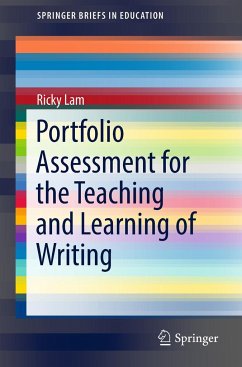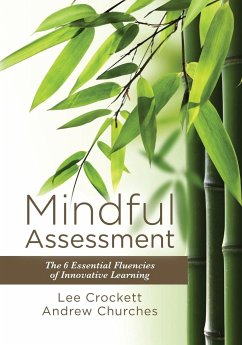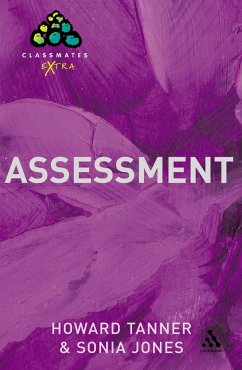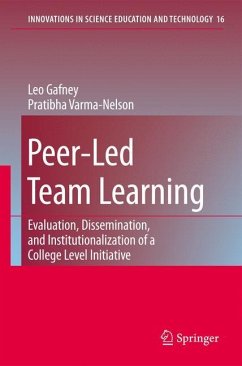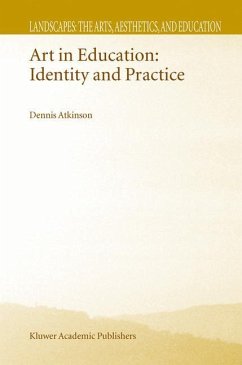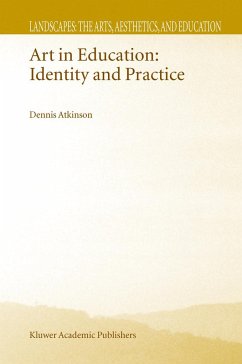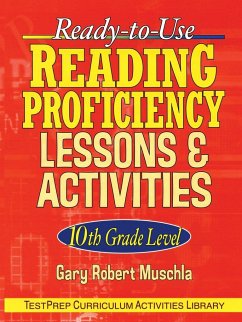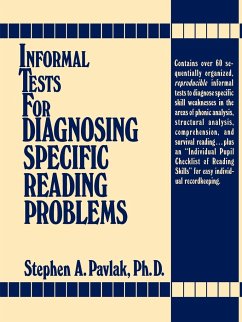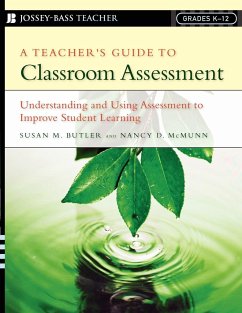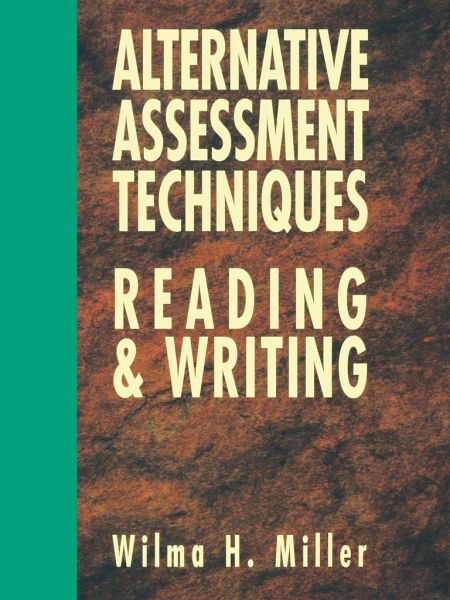
Alternative Assessment Techniques for Reading & Writing
Versandkostenfrei!
Versandfertig in über 4 Wochen
36,99 €
inkl. MwSt.

PAYBACK Punkte
18 °P sammeln!
This practical resource helps elementary classroom, remedial reading, and LD teachers make the best possible informal assessment of a child's specific reading, writing, and spelling strengths and weaknesses and attitudes toward reading. Written in easy-to-follow nontechnical language, it provides a multitude of tested informal assessment strategies and devices, such as "kid watching," retellings, journals, IRIs, writing surveys, portfolios, think alouds and more-- including more than 200 reproducible assessment devices ready for immediate use! For quick access and easy duplication, materials a...
This practical resource helps elementary classroom, remedial reading, and LD teachers make the best possible informal assessment of a child's specific reading, writing, and spelling strengths and weaknesses and attitudes toward reading. Written in easy-to-follow nontechnical language, it provides a multitude of tested informal assessment strategies and devices, such as "kid watching," retellings, journals, IRIs, writing surveys, portfolios, think alouds and more-- including more than 200 reproducible assessment devices ready for immediate use! For quick access and easy duplication, materials are printed in a big lay-flat binding that folds flat for photocopying and are organized into 11 chapters, including: 1. Using informal devices in assessing reading and writing ability 2. Using checklists and other devices to assess visual perception ability, emergent literacy skills, word identification skills and oral reading 3. Using checklists and other devices to assess vocabulary, comprehensive skills, basic study skills, and silent reading 4. Using miscue analysis in reading assessment 5. Variations of the individual reading inventory 6. Using informal inventories and other devices in the word identification techniques 7. Other ways to assess reading skills and attitudes 8. Using checklists to assess drawing, writing and spelling 9. Using holistic scoring and the informal inventory to assess writing 10. Other means of assessing writing and spelling ability 11. Using portfolio assessment in any literacy program You'll find a detailed description of each informal assessment technique along with step-by-step procedures for its use and, wherever possible, one or more reproducible sample devices. Complete answer keys for each device are included with the directions. Among the unique topics covered are the innovative individual reading inventory mentioned above... San Diego Quick Assessment List...El Paso Phonics Survey...&QAD; QAD Chart...Holistic Scoring of Writing...and reproducible devices for portfolio assessment. In short, ALTERNATIVE ASSESSMENT TECHNIQUES FOR READING WRITING offers a wealth of tested, ready-to-use informal assessment information and devices that should save the teacher a great deal of time and energy in making a useful assessment of any student's literacy ability!





